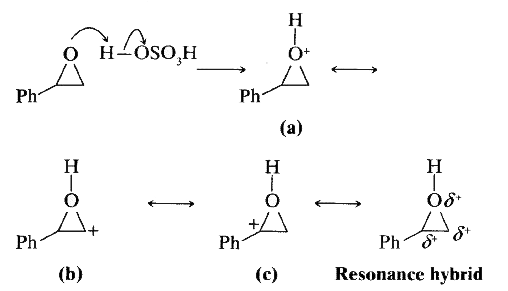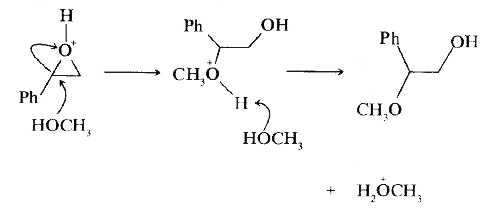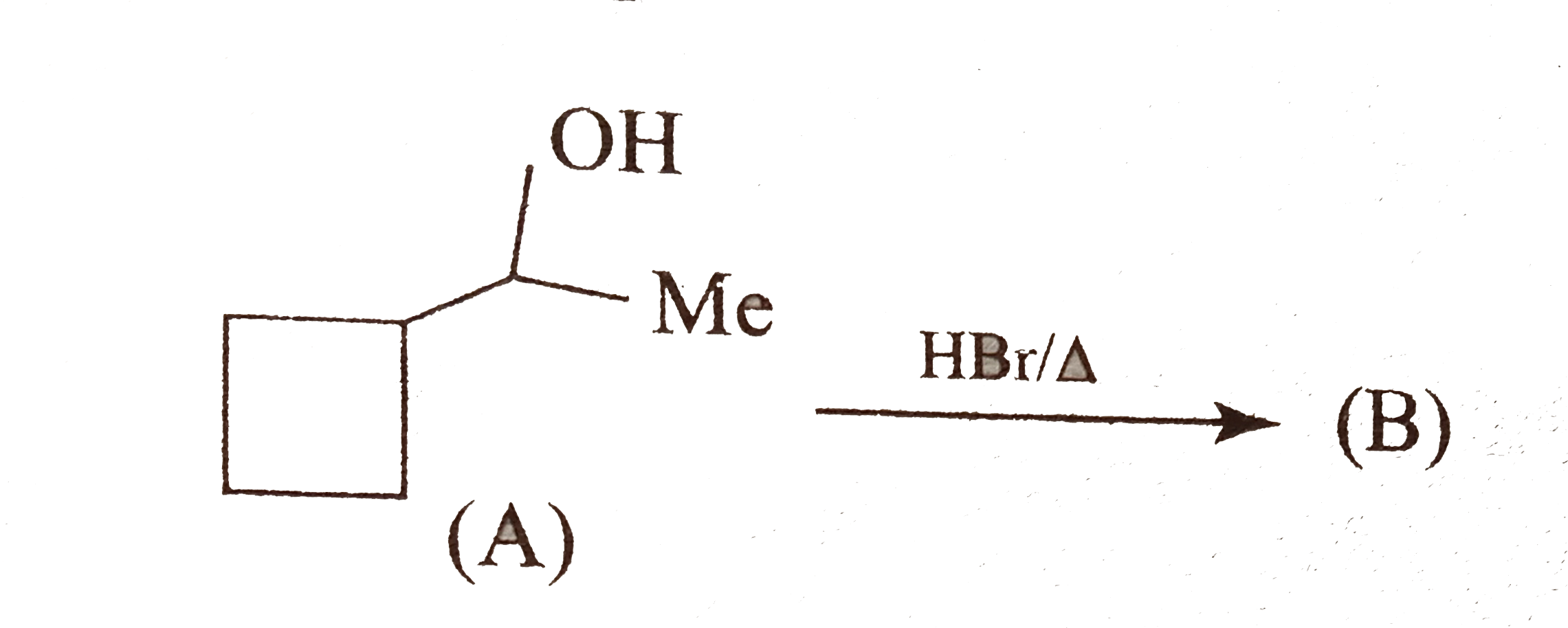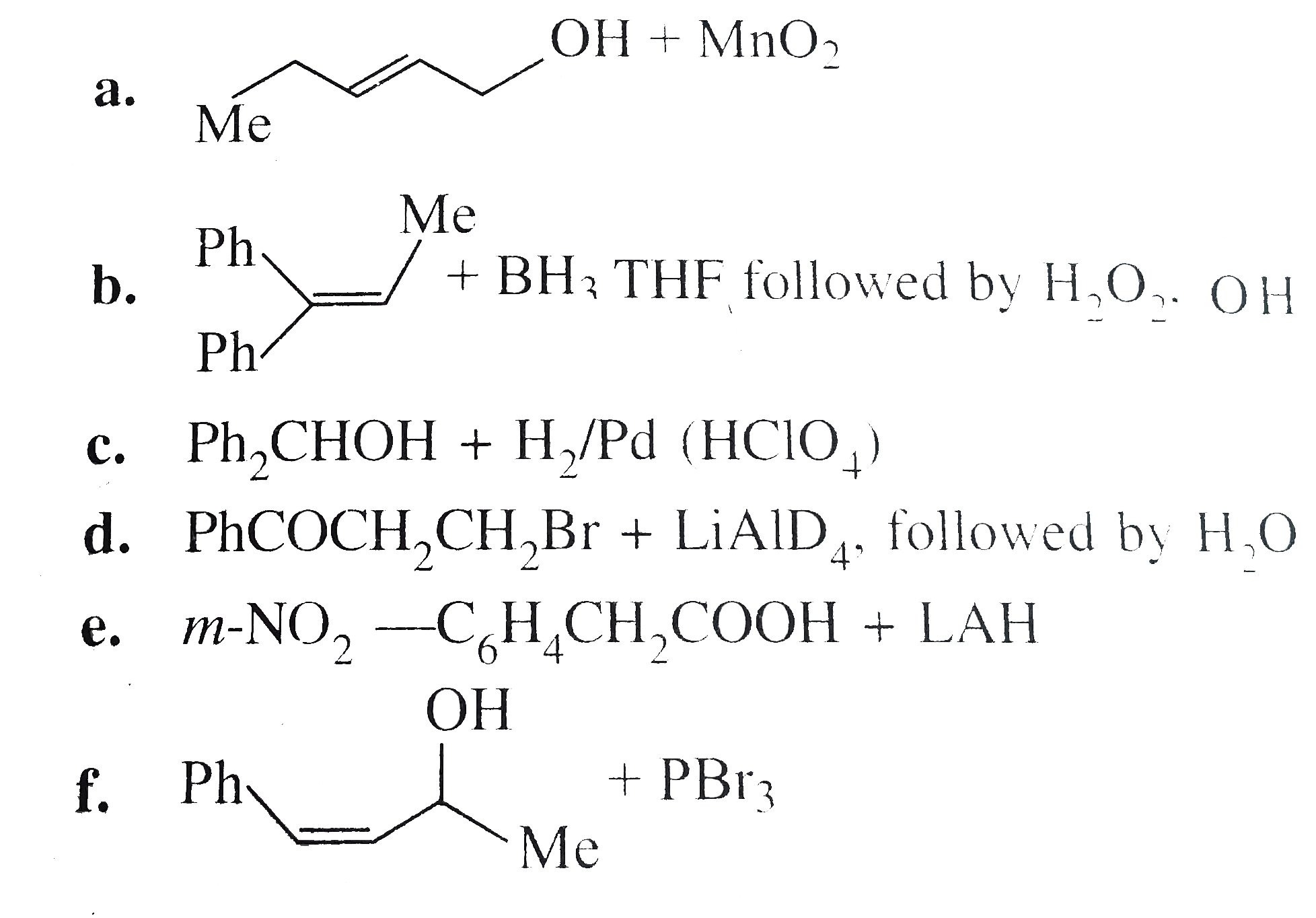Give the products and mechanism for each of the following reactions. Explain why nucleophilic attack on the epoxide occurs at different sites in the two reactions.

Attack by a strong nucleophile such as CH3O− (methoxide ion) on an epoxide occurs at the least hindered carbon, similar to an SN2 reaction. Since methoxide is regenerated in the last step , this mechanism suggests that only a catalytic amont of CH3O− is required .

Attack by a weak nucleophile such as methanol (CH3OH) can occur only when the epoxide has been protonated so that a better leaving group is formed . Under these conditions, the epoxide C-O bonds are weakened because the leaving group has been improved. THe protonated epoxide can be viewed as a resonance hybrid of the following structures :
 A weak nucleophile attacks the resonance hybrid carbon with the largest δ+ charge. The magnitude of the δ+ is determined by the relative importance of the resonance contributors. Resonance contributor (a) is the most important because all the atoms have a full octet. Contributor (b) is a secondary carbocation with benzene ring resonance whereas contributor (c) is a primary carbocation , so contribution (b) is more important than (c) .These relative contribiutions in the resonance hybrid reveal that the benzylic carbon has more δ+ than the primary carbon, so the nucleophile attacks at the benzylic carbon. (The same reasoning applies to any three -membered ring with two carbons and a third atom bearing a positive charge, such as a protonated epoxide ,a halonium ion or a mercurinium ion )
A weak nucleophile attacks the resonance hybrid carbon with the largest δ+ charge. The magnitude of the δ+ is determined by the relative importance of the resonance contributors. Resonance contributor (a) is the most important because all the atoms have a full octet. Contributor (b) is a secondary carbocation with benzene ring resonance whereas contributor (c) is a primary carbocation , so contribution (b) is more important than (c) .These relative contribiutions in the resonance hybrid reveal that the benzylic carbon has more δ+ than the primary carbon, so the nucleophile attacks at the benzylic carbon. (The same reasoning applies to any three -membered ring with two carbons and a third atom bearing a positive charge, such as a protonated epoxide ,a halonium ion or a mercurinium ion )

Since the proton source is regenerated in the last step, this mechanism suggests that only a catalyst amount of acid is needed.
Related Playlists
- BOOK - MS CHOUHANCHAPTER - ALCOHOLS AND ETHERSEXERCISE - ADDITIONAL OBJECTIVE QUESTIONS (SINGLE CORRECT CHOICE TYPE)26videos
ALCOHOLS AND ETHERS
- BOOK - MS CHOUHANCHAPTER - ALCOHOLS AND ETHERSEXERCISE - ADDITIONAL OBJECTIVE QUESTIONS (Linked Comprehension Type ) Paragraph for Question 1 to 41videos
ALCOHOLS AND ETHERS
- BOOK - MS CHOUHANCHAPTER - ALCOHOL, ETHERS AND EPOXIDESEXERCISE - Subjective Problems1videos
ALCOHOL, ETHERS AND EPOXIDES
- BOOK - MS CHOUHANCHAPTER - ALCOHOLS FROM CARBONYL COMPOUNDSEXERCISE - Additional Objective Questions (Multiple Correct Choice Type )1videos
ALCOHOLS FROM CARBONYL COMPOUNDS
Similar Questions
Give the product and propose the mechanism of the following reaction.
 View Solution
View SolutionGive the major product and mechanism involved in the following reaction.
 View Solution
View SolutionGive the major product and mechanism involved in the following reaction.
 View Solution
View SolutionExplain the mechanism of the following reaction:
 View Solution
View SolutionExplain the mechanism of the following reaction:
 View Solution
View SolutionWrite a mechanism that explains the following reaction
 View Solution
View SolutionGive the product of each of the following reactions:
 View Solution
View SolutionExplain why nucleophilic substitution reactions are not very common in phenols.
View SolutionExplain why nucleophilic substitution reactions are not very common in phenols.
View SolutionExplain why nucleophilic substitution reactions are not very common in phenols ?
View Solution

